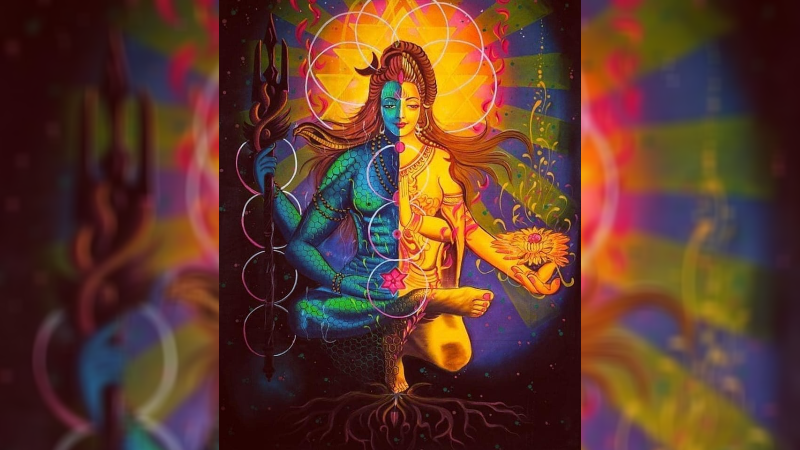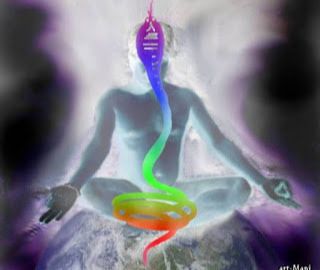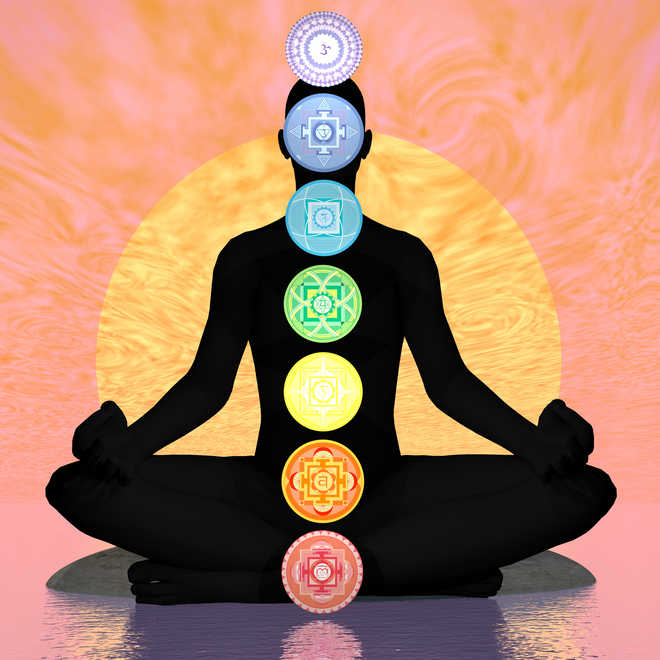S
Shruti Dasgupta
Guest
Lord Shiva, Tantra, and Kundalini are often interlinked. Lord Shiva is the ultimate yogi and the embodiment of divine consciousness. Many sects conduct their worship of Shiva using different forms and methods. Some sects considered him a yogi and tantric practitioner. Lord Shiva’s Ardhanarishvara form depicts a half-male and half-female human. This form celebrated the union of masculine and feminine energies within the cosmos. This form represents the harmonization and integration of opposites within oneself. It is the core principle in Tantra.

PC Vedic Sources
Vedic legends state that Shiva delved deep into esoteric practices, including meditation, breath control, mantra recitation, and the awakening of Kundalini energy. Some ancient texts name this deep form of meditation as a Tantric practice. Thus, Lord Shiva is often depicted in yogic postures and is associated with the serpentine energy of Kundalini.
In the realm of spiritual practices, Kundalini stands as a profound and transformative force that has captured the attention of seekers for centuries. With origins deeply rooted in ancient wisdom, Kundalini holds the promise of unlocking dormant potential and ushering individuals toward higher realms of consciousness.
The most common depiction of Kundalini is as a coiled serpent. This serpent usually lies dormant at the base of the spine. It represents the latent energy residing within every individual. Kundalini can be awakened through dedicated practices. Ancient texts state that this dormant energy ascends along the central energy channel, known as the Sushumna Nadi. Thus, the awakening of this Nadi leads to enlightenment.

PC Crystals and Holistic Healings
Kundalini’s awakening opens doors to heightened states of consciousness. Moreover, its practice allows individuals to experience spiritual growth and a deep connection with the universal divine energy. The awakening of Kundalini ignites a surge of life force energy that revitalizes the body. Moreover, it infuses the practitioners with increased vitality and enthusiasm.

PC The Tribune
The seven Kundalini chakras are energy centers located along the spine, from the base to the crown of the head.
The seven Kundalini chakras are:

PC Netmeds.com
While Kundalini’s awakening is historically intertwined with Tantra, it is not limited to Tantric practices. Kundalini represents a universal force present in various spiritual traditions, embodying the potential for spiritual growth, awakening, and self-realization. However, Kundalini Yoga is a dynamic practice of physical postures, breathwork, chanting, and meditation, creating a holistic approach to spiritual evolution.
Kundalini Yoga facilitates the release of emotional blockages, fostering emotional healing, and promoting a greater sense of emotional balance and well-being. Thus, mindful movement, breathwork, and meditation are powerful tools of Kundalini Yoga. They reduce stress, calm the mind, and cultivate inner peace in this form of yoga.
Moreover, the dynamic movements and postures in this yoga enhance physical health, flexibility, strength, and overall well-being. It also supports the endocrine system and bolsters the immune system. Heightened self-awareness is an additional benefit of Kundalini Yoga. It enables individuals to observe their thoughts, emotions, and patterns more objectively. This leads to greater mindfulness and self-discovery.
Kundalini practices focus on the unity of thought and action. They nurture a deeper connection in relationships and enhanced empathy. Its successful incorporation into life leaves a profound sense of compassion and love for oneself as well as others.

PC Fit Chapter
While Kundalini practices offer transformative potential, it is crucial to approach it with caution and guidance. All yogic practices need the guidance of a qualified teacher. Similarly, a guru is essential to Kundalini yoga and meditation. The guide or guru promotes practitioners to respect bodily limitations and encourage regularity as well as consistency in their study.
However, Kundalini’s awakening has many potential risks. Texts and reports state that it can lead to energy imbalances, physical discomfort, emotional upheaval, and destabilization of the nervous system. These risks highlight the importance of practicing under the guidance of experienced teachers and engaging in self-care practices.
Kundalini is a dormant force within the human body. It holds the key to profound awakening and spiritual evolution. Moreover, its practices and meditations offer a path toward expanded consciousness, inner peace, and self-realization. Embracing the ancient wisdom of Kundalini with reverence and diligence can help individuals to embark on a journey that unveils their true potential. The journey of Kundalini’s awakening ends with a connection to the divine infinite. However, the path of Kundalini should be walked with the help and guidance of qualified teachers and gurus. Their blessings and the efforts of the seeks can harness the transformative power of this ancient practice.
The post Kundalini: Awakening, Yoga, Benefits, and Precautions appeared first on The Jaipur Dialogues.
Continue reading...

PC Vedic Sources
Vedic legends state that Shiva delved deep into esoteric practices, including meditation, breath control, mantra recitation, and the awakening of Kundalini energy. Some ancient texts name this deep form of meditation as a Tantric practice. Thus, Lord Shiva is often depicted in yogic postures and is associated with the serpentine energy of Kundalini.
In the realm of spiritual practices, Kundalini stands as a profound and transformative force that has captured the attention of seekers for centuries. With origins deeply rooted in ancient wisdom, Kundalini holds the promise of unlocking dormant potential and ushering individuals toward higher realms of consciousness.
Unleashing the Serpent Power: Understanding Kundalini Awakening
The most common depiction of Kundalini is as a coiled serpent. This serpent usually lies dormant at the base of the spine. It represents the latent energy residing within every individual. Kundalini can be awakened through dedicated practices. Ancient texts state that this dormant energy ascends along the central energy channel, known as the Sushumna Nadi. Thus, the awakening of this Nadi leads to enlightenment.

PC Crystals and Holistic Healings
Kundalini’s awakening opens doors to heightened states of consciousness. Moreover, its practice allows individuals to experience spiritual growth and a deep connection with the universal divine energy. The awakening of Kundalini ignites a surge of life force energy that revitalizes the body. Moreover, it infuses the practitioners with increased vitality and enthusiasm.
The Seven Kundalini Chakra:

PC The Tribune
The seven Kundalini chakras are energy centers located along the spine, from the base to the crown of the head.
These align with the Sushumna Nadi. These chakras are associated with specific qualities; when they are awakened they encourage specific physical, emotional, and spiritual benefits.
The seven Kundalini chakras are:
- Muladhara or Root Chakra is located at the base of the spine. It represents the foundation, stability, and sense of belonging. It is associated with basic survival instincts, grounding, and a main connection to the physical world.
- Svadhisthana or Sacral Chakra is located in the lower abdomen. This chakra is associated with creativity, sensuality, reproduction, and relationships. It governs the ability to experience pleasure, joy, and intimacy.
- Manipura or Solar Plexus Chakra is located in the upper part of the abdomen. It is associated with personal power, confidence, and willpower. It influences self-esteem, motivation, and ability to manifest desires.
- Anahata or Heart Chakra resides in the center of the chest. This chakra represents love and compassion. Its awakening increases emotional balance. It is associated with the ability to give and receive love.
- Vishuddha or Throat Chakra is located in the throat area. It is connected with communication. It governs authentic self- expression and attentive listening.
- Ajna or Third Eye Chakra is located between the eyebrows in the center of the forehead. This chakra guides intuition, perception, and spiritual awareness. It is often referred to as the “third eye” and represents our inner wisdom or vision. Therefore, it is the doorway to a higher state of consciousness.
- Sahasrara or Crown Chakra resides at the crown of the head. This chakra represents the final connection to the divine. It enables complete spiritual enlightenment. Thus, it is the gateway to higher states of consciousness. It is associated with transcendence, unity, and the integration of physical and spiritual selves.
Harnessing Benefits of Kundalini Yoga:

PC Netmeds.com
While Kundalini’s awakening is historically intertwined with Tantra, it is not limited to Tantric practices. Kundalini represents a universal force present in various spiritual traditions, embodying the potential for spiritual growth, awakening, and self-realization. However, Kundalini Yoga is a dynamic practice of physical postures, breathwork, chanting, and meditation, creating a holistic approach to spiritual evolution.
Kundalini Yoga facilitates the release of emotional blockages, fostering emotional healing, and promoting a greater sense of emotional balance and well-being. Thus, mindful movement, breathwork, and meditation are powerful tools of Kundalini Yoga. They reduce stress, calm the mind, and cultivate inner peace in this form of yoga.
Moreover, the dynamic movements and postures in this yoga enhance physical health, flexibility, strength, and overall well-being. It also supports the endocrine system and bolsters the immune system. Heightened self-awareness is an additional benefit of Kundalini Yoga. It enables individuals to observe their thoughts, emotions, and patterns more objectively. This leads to greater mindfulness and self-discovery.
Kundalini practices focus on the unity of thought and action. They nurture a deeper connection in relationships and enhanced empathy. Its successful incorporation into life leaves a profound sense of compassion and love for oneself as well as others.
Considerations, Precautions, and Harmful Effects

PC Fit Chapter
While Kundalini practices offer transformative potential, it is crucial to approach it with caution and guidance. All yogic practices need the guidance of a qualified teacher. Similarly, a guru is essential to Kundalini yoga and meditation. The guide or guru promotes practitioners to respect bodily limitations and encourage regularity as well as consistency in their study.
However, Kundalini’s awakening has many potential risks. Texts and reports state that it can lead to energy imbalances, physical discomfort, emotional upheaval, and destabilization of the nervous system. These risks highlight the importance of practicing under the guidance of experienced teachers and engaging in self-care practices.
Conclusion:
Kundalini is a dormant force within the human body. It holds the key to profound awakening and spiritual evolution. Moreover, its practices and meditations offer a path toward expanded consciousness, inner peace, and self-realization. Embracing the ancient wisdom of Kundalini with reverence and diligence can help individuals to embark on a journey that unveils their true potential. The journey of Kundalini’s awakening ends with a connection to the divine infinite. However, the path of Kundalini should be walked with the help and guidance of qualified teachers and gurus. Their blessings and the efforts of the seeks can harness the transformative power of this ancient practice.
The post Kundalini: Awakening, Yoga, Benefits, and Precautions appeared first on The Jaipur Dialogues.
Continue reading...
